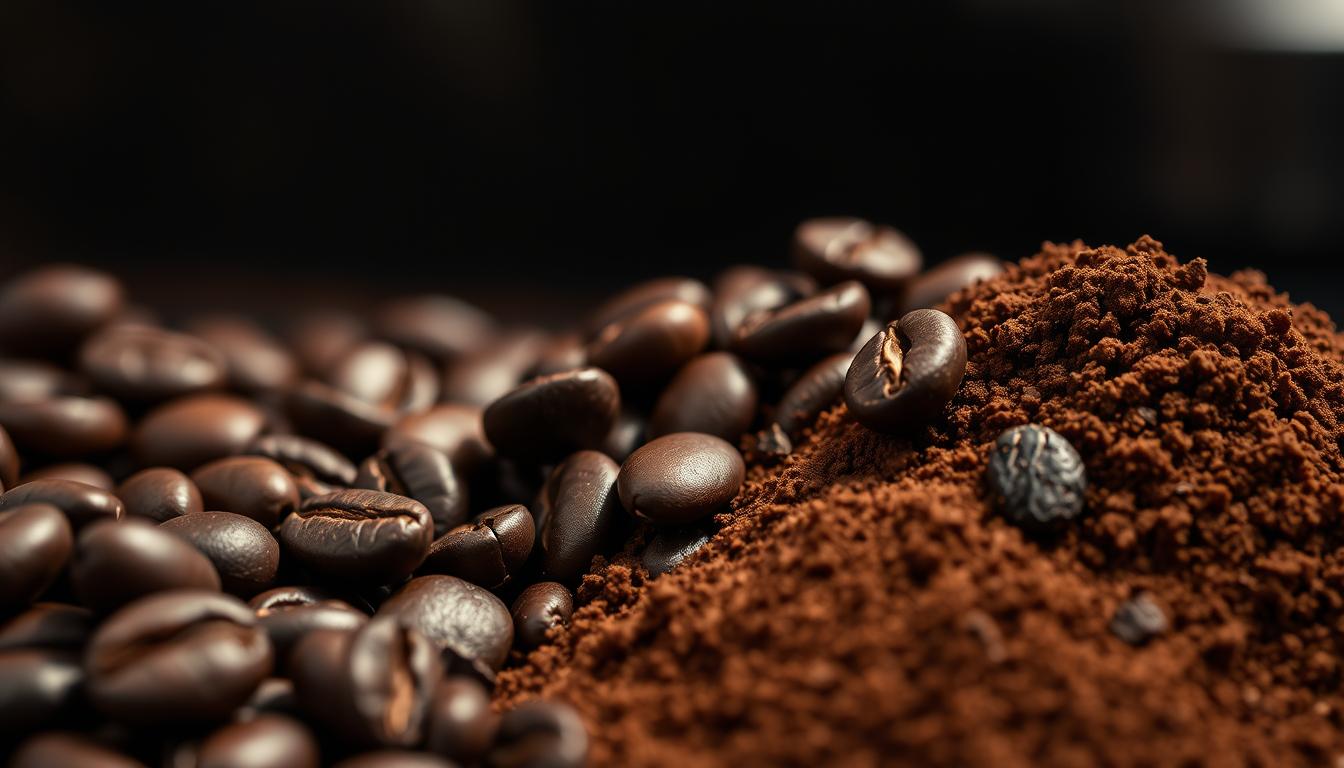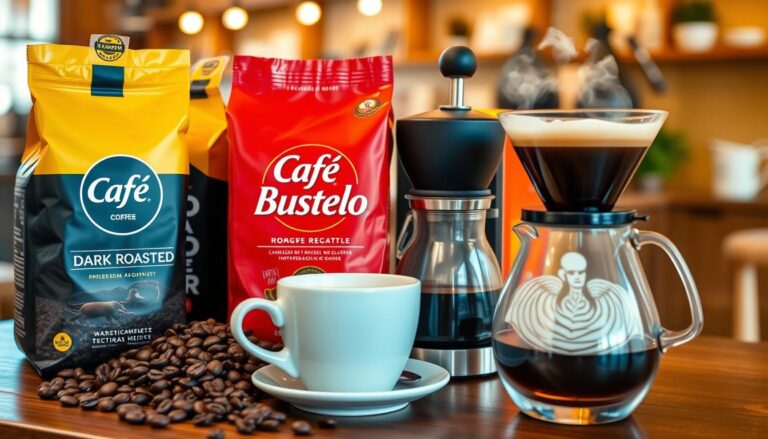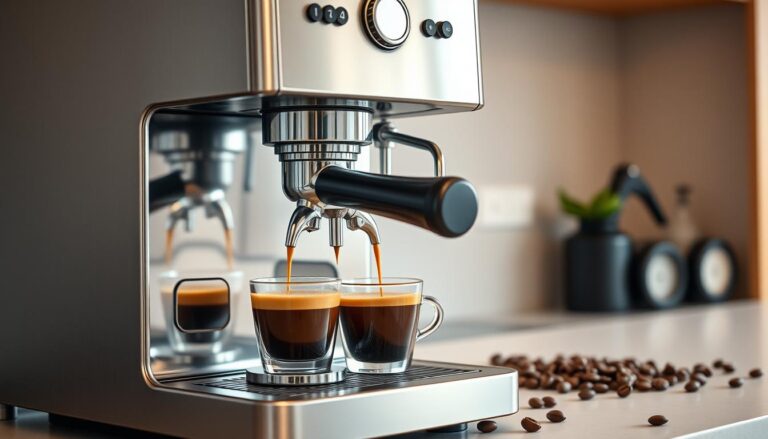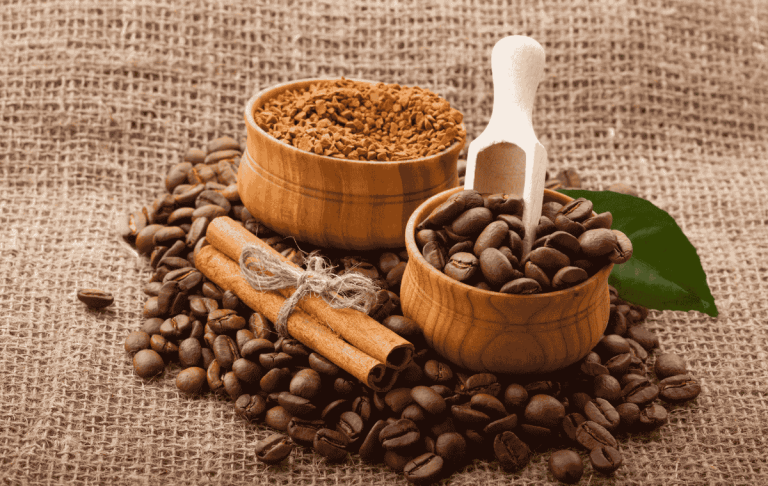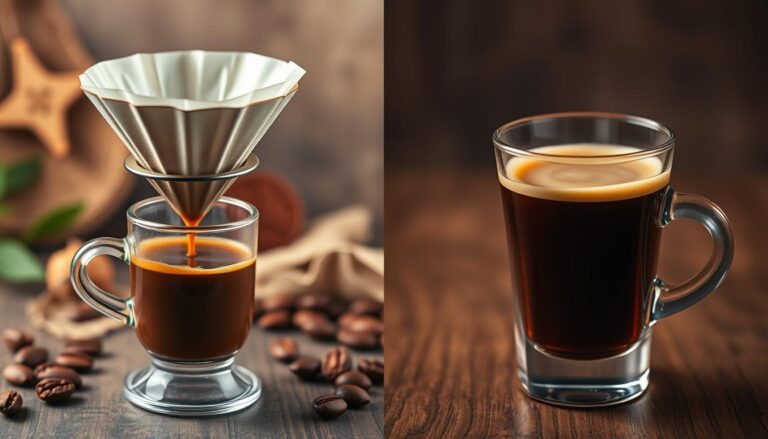Ever thought about using any coffee beans for espresso? Or is it more than just picking any bag? While you can make espresso with different beans, the quality matters a lot. The right beans, roast, and grind size are key to a great espresso.
So, what are the top coffee beans for espresso? Let’s find out what makes some beans better for a rich, satisfying espresso.
Espresso Basics
Understanding espresso means knowing its espresso fundamentals. This includes its brewing process and what makes it special. We’ll explore these key points to get to the heart of espresso.
What Defines Espresso?
Espresso is more than just coffee. It’s a way to make a rich, concentrated drink. The process involves finely ground coffee and high-pressure water. This creates a strong flavor and creamy texture.
The Brewing Process
The brewing process is key to espresso’s taste. Water is heated to the right temperature and pushed through the coffee grounds at high pressure. This quick process is vital for a balanced shot.
Key Characteristics of Espresso
Espresso has several characteristics of espresso that make it stand out. Its strong flavor is a big hit with coffee lovers. It also has more caffeine than regular coffee. Plus, the crema on top shows it’s fresh and of high quality.
Types of Coffee Beans
Choosing the right coffee beans for espresso is key. There are mainly two types: Arabica and Robusta. Each has its own taste, smell, and quality, which matters a lot in espresso.
Arabica vs. Robusta
Arabica beans make up 60-70% of the world’s coffee. They are known for their smooth, sweet taste and high acidity. Robusta beans, on the other hand, are stronger with a bitter taste. They have more caffeine, making the espresso’s crema thicker.
The choice between Arabica and Robusta changes how your espresso tastes.
Flavor Profiles of Each Bean
The taste of espresso beans can greatly affect your coffee experience. Arabica beans often have floral, fruity, or nutty flavors, making them popular for a sweeter taste. Robusta beans, while less complex, have a bold taste with hints of chocolate or spice.
Knowing these flavors helps you pick the right beans for your espresso.
Blends vs. Single-Origin Beans
Deciding between blends and single-origin beans is another important choice. Blends mix different beans for a consistent taste. Single-origin beans, on the other hand, show off the unique taste of a region.
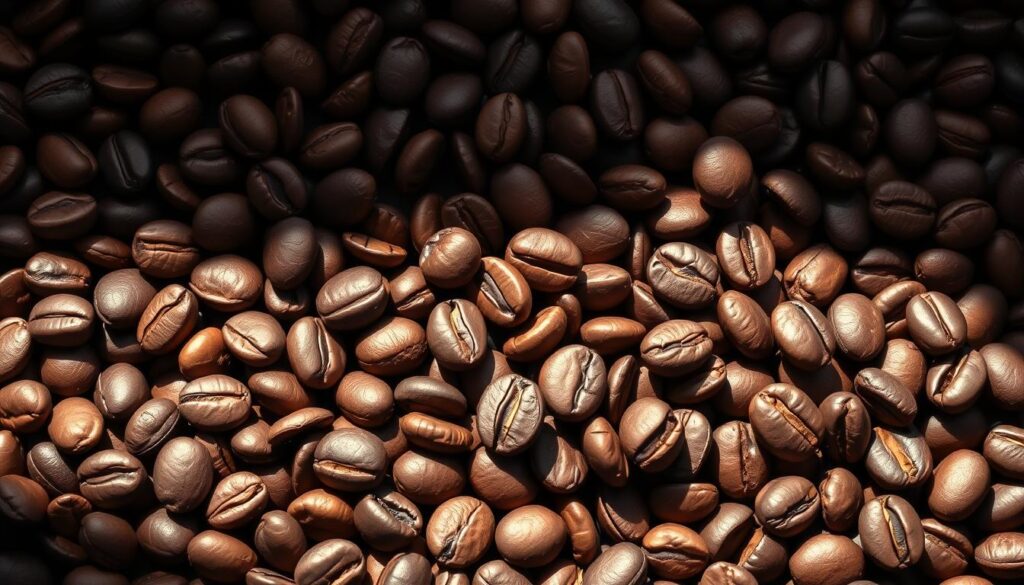
Roast Levels and Their Impact
The roast level you choose greatly affects your espresso’s taste. Knowing the difference between light and dark roast helps pick the right coffee beans. Each roast brings its own special qualities that can change how you enjoy your espresso.
Light Roast vs. Dark Roast
Light roasts have bright acidity and a strong flavor. They let the coffee’s natural taste stand out. But, they might not have the depth some people want in an espresso.
Dark roasts, though, offer rich, sweet tastes that match the espresso’s boldness. This makes some think dark roasts are the only choice for great espresso.
Understanding Medium Roasts
Medium roasts find a middle ground, balancing brightness and richness. They suit many tastes without being too bitter. This makes them a favorite for those who enjoy espresso’s depth without harsh flavors.
Choosing the Right Roast for Espresso
When picking coffee beans for espresso, think about what you like. Whether you prefer light’s brightness or dark’s richness, knowing this improves your brewing. Each roast can make amazing espresso if chosen right for your taste and brewing style.
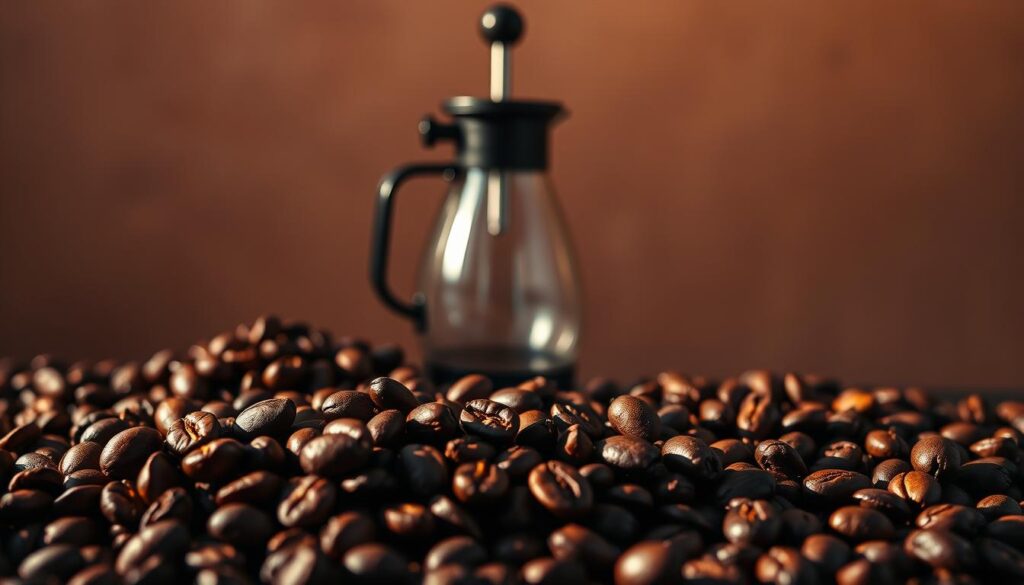
Grind Size Considerations
The grind size is key when making espresso. The right grind size ensures the best extraction, bringing out the full flavor of the beans. Understanding how grind sizes affect taste and crema is vital.
If the grind is too coarse, the espresso will be weak. Too fine, and it will be bitter. Finding the perfect grind is essential.
Importance of Grind Size for Espresso
A fine grind size is best for espresso. It lets water flow through the grounds at the right rate under pressure. This increases the surface area, improving extraction and making the espresso rich and creamy.
Adjusting your grind size is important. It ensures you get the most out of each bean’s flavor.
How to Achieve the Perfect Grind
Using a burr grinder is the best way to get the perfect grind. It makes sure all coffee particles are the same size, which maximizes flavor extraction. Adjusting the grind for different beans or roast levels is important.
Lighter roasted beans need a finer grind than dark roasts. Small changes can make a big difference in flavor.
Tips for Grinding at Home
Here are some tips for grinding at home:
- Start with fresh, high-quality beans
- Experiment with grind settings to find your ideal preference
- Regularly clean your grinder to avoid stale flavors
- Store coffee beans in an airtight container to maintain freshness
Following these tips will improve your espresso-making at home. You’ll be able to create amazing shots right in your own kitchen.
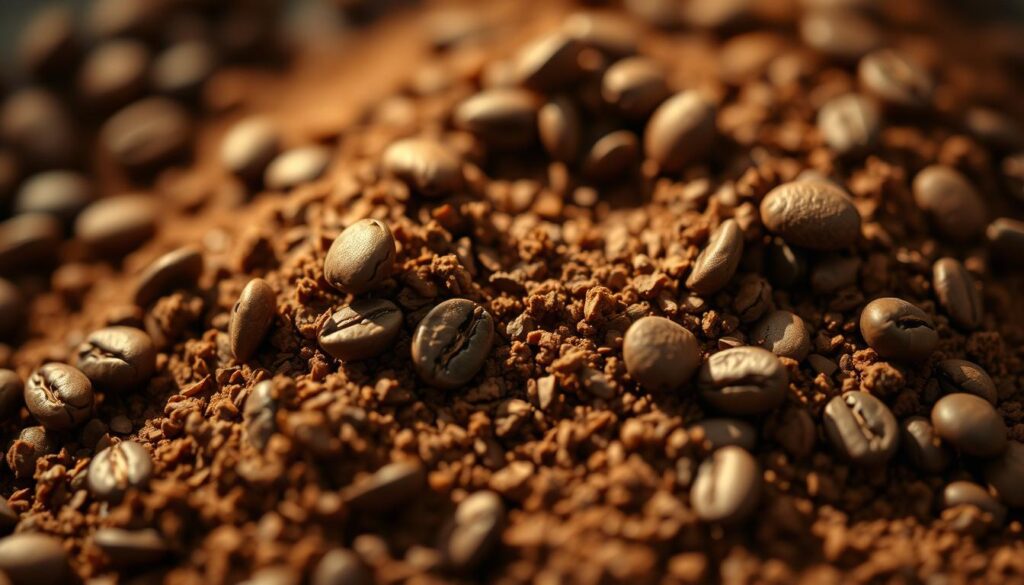
Flavor Profiles and Tasting Notes
Exploring the flavors in espresso makes every sip special. Each coffee bean has its own unique taste that can make your coffee better. You might find everything from rich chocolates to delicate floral notes, depending on the beans and how they’re brewed.
Common Flavor Notes in Espresso
When you enjoy a great espresso, you might taste:
- Chocolate
- Caramel
- Nuts
- Fruits
- Spices
These flavors mix together to create the taste you experience. They’re shaped by the beans and how they’re roasted. Learning to identify these flavors helps you appreciate the skill behind coffee making.
How Different Beans Affect Taste
The type of bean used greatly impacts the taste of your espresso. Arabica beans are known for their sweet and refined taste. Robusta beans, on the other hand, offer a bolder and earthier flavor. This difference is key to understanding the taste of your espresso.
Experimenting with Flavor Profiles
Try different beans and roast levels to explore new flavors. Changing your brewing method can also reveal unique tastes. For example, a lighter roast might highlight fruitier notes, while a darker roast could bring out chocolatey flavors. Experimenting lets you find your favorite espresso flavors.
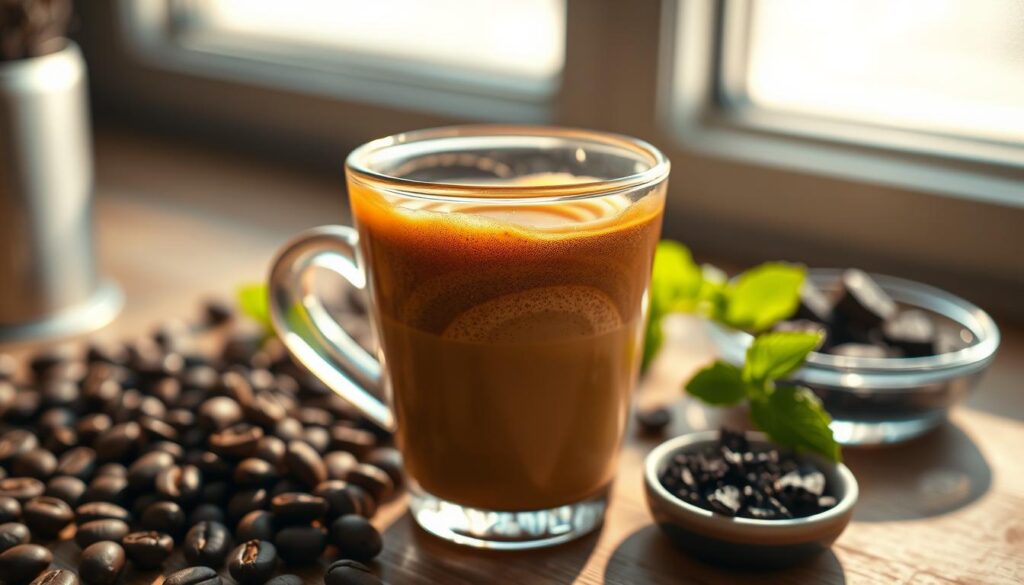
Regional Coffee Varieties
Exploring coffee from different regions reveals a world of flavors and aromas. Each region offers unique specialty coffee varieties that change how your espresso tastes. Knowing these differences helps you choose the best coffee for your brew.
Popular Regions for Espresso Beans
Some top places for growing espresso beans include:
- Ethiopia – Known for fruity and floral notes.
- Colombia – Offers well-balanced flavor and mild acidity.
- Brazil – Known for chocolatey and nutty flavors.
Unique Traits of Regional Varieties
Every region has coffee beans with special traits. Ethiopian beans have bright acidity and berry flavors. Colombian beans are smooth and rich, perfect for classic espresso lovers.
Brazilian beans have a heavy body with sweet chocolate notes. They’re great for those who like a strong brew.
Sourcing Specialty Beans
Buying espresso beans ethically adds to your coffee experience. Specialty coffee often comes from sustainable and fair trade practices. Look for roasters or importers who work directly with farmers.
This ensures high-quality beans and supports coffee communities. Paying attention to these details deepens your appreciation for espresso.
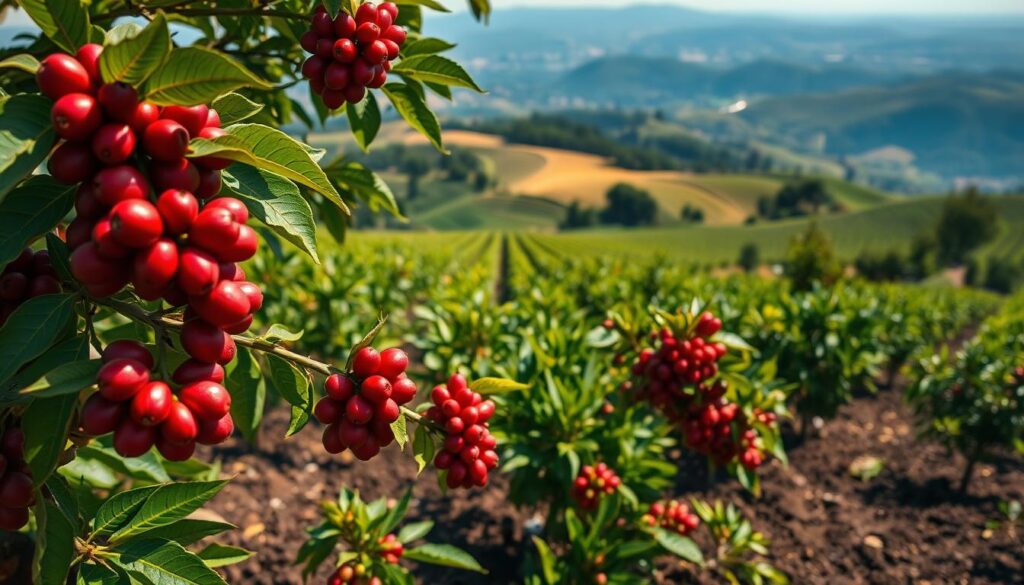
Common Misconceptions
Many people believe wrong things about espresso, which affects how they pick their coffee. Knowing the truth can help you choose better beans and brewing methods. It also helps you understand coffee quality and prices better.
Myths About Espresso Beans
Some think dark roasts are the only good choice for espresso. But, light and medium roasts have great flavors too. It’s a myth that espresso beans must have a special label.
Actually, any coffee bean can be used for espresso. It just needs to be ground right and brewed at the right pressure.
Dispelling Coffee Myths
It’s important to know that higher prices don’t always mean better taste. Coffee bean prices depend on many things like where it’s from, how it’s made, and how easy it is to get.
Even though some beans cost more, they might not taste better than cheaper ones. It’s best to choose based on what you like, not just the price.
Understanding Quality vs. Cost
Knowing about coffee bean prices helps you pick what you like without spending too much. Learning what makes a coffee good can help you find great beans without getting caught up in myths.
Tips for Brewing the Perfect Espresso
To make great espresso at home, you need the right tools. This guide will help you choose a top-notch espresso machine and a reliable grinder. A burr grinder is best because it grinds coffee evenly, which is key for good extraction. Don’t forget to get a tamper, scale, and milk frother to improve your brewing.
Getting the best espresso involves a few important steps. First, make sure your water is between 195°F and 205°F. Use the right pressure, about 9 bars. Adjusting your grind size is also critical; a finer grind brings out more flavor but can be too much if not balanced right.
When brewing espresso, you might run into some common problems. Channeling can make your espresso taste bitter and uneven. To avoid this, make sure your coffee is spread out evenly in the portafilter and tamped right. If your espresso tastes too bitter, try changing your grind size or water temperature. Remember, making great espresso takes time and practice.

